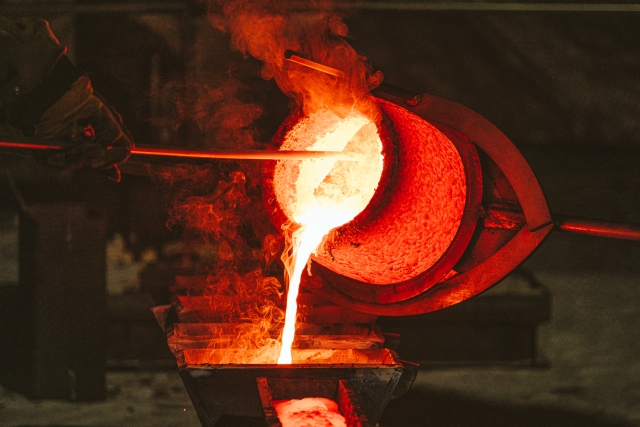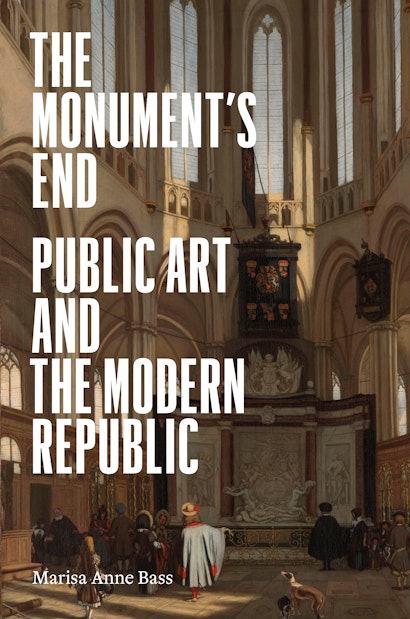In October 2023, one monument met its end for the sake of another. A bronze equestrian statue of the Confederate general Robert E. Lee that had stood in Charlottesville, Virginia since 1924 was sent to the furnace to be melted down, piece by piece, and formed into uniform rectangular ingots. The transformation of the statue back into raw metal came with a promise: the ingots would be used to create a new work of public art designed to answer the injustices embodied by the original.
The Lee statue was one of many monuments that were taken down in the wake of the Unite the Right rally that took place on August 12, 2017. This violent event shook Charlottesville and reverberated around the world. The statue was commissioned in 1917 by Paul Goodloe McIntire, a stockbroker who invested his wealth in the ‘beautification’ of Charlottesville as a means to promote segregation. He undertook several ventures to mark white-only spaces within the city and to rewrite the recent past of the Confederacy as triumphant. Hundreds of Confederate monuments erected across the United States during the decades after the Civil War shared the same purpose. Their history remains important to recount not least because the corrosive ideals of white supremacy that they represent are still with us.
The developing afterlife of the Lee statue is also part of another history, too, one that transcends the American context and dates back centuries earlier—a history that I have been thinking and writing about for a decade. To write about monuments is to write about war. This is because monuments, almost without exception, rise and fall under conditions of conflict. Wars waged on the battlefield or in the streets, wars of ideology or of identity—these are the circumstances that bring monuments into being, and that also result in their demise.
When the Lee statue was melted down, it entered the annals of bronze monuments made or destroyed through acts of material reuse, most often in the aftermath of war. Bronze is an alloy consisting primarily of copper, an expensive metal that was scarce in wartime due to its use in the cannons that dominated battlefields from the sixteenth through the nineteenth century. A remarkable number of monuments standing today were made entirely or in part from melted-down cannons. Prominent examples include the statue of the Virgin Mary and Child atop the column in the piazza of Rome’s Santa Maria Maggiore, Napoleon’s Column on the Place Vendôme in Paris, Nelson’s Column in London’s Trafalgar Square, and the equestrian monument of Andrew Jackson in Lafayette Park, just north of the White House in Washington, D.C.
There is no way to look at a bronze monument cast from former cannons and see the metal’s origin, but the origin of the material mattered to their makers. Shortly after receiving the commission for the Charlottesville statue of Robert E. Lee in 1917, the sculptor Henry Merwin Shrady wrote to McIntire’s personal aid with a request. Shrady wanted “as a matter of sentiment” to cast the sculpture from bronze derived from Confederate cannons. The implication was clear: a monument cast from artillery that had been mobilized against the Union would empower Lee’s legacy as the epitome of Confederate heroism. Although no cannons could be found to reuse for the statue, the unrealized request speaks to the ways that monuments like this one were conceived as weapons of ideological warfare. Cannons were a potential source of a costly material, but more to the point, their reuse invested a monument with an implied target.
I first became interested in the interconnection between cannons and monuments as a way to address a larger question: how do monuments work? That is different than asking what monuments represent. The kind of work that monuments do transcends their design or the original intentions behind them. It includes the range of responses that they elicit over the course of their existence—sometimes even after they have been toppled or destroyed.
My research began with an infamous monument from the early modern Netherlands, which sparked protest as fierce as any in recent history. In 1571, a bronze statue of the Spanish general Fernando Álvarez de Toledo, third duke of Alba, was installed on the general’s orders overlooking the metropolis of Antwerp, a city in modern-day Belgium. Alba had been sent by the king of Spain to suppress a mounting revolt against Spanish authority in the Low Countries, and his monument was designed to declare that mission accomplished. The statue was cast by the Netherlandish sculptor Jacques Jonghelinck, who executed the work with a skill and beauty at odds with the affront of its design. The statue depicted Alba trampling two Netherlandish rebels, their weapons rendered powerless by the general’s stance and gesture of command. This imagery alone was enough to cause offense.

The monument’s explicit iconography, however, was matched by an equal insistence on its material source. An inscription beneath Alba’s feet proclaimed the statue’s creation “from captured bronze,” a reference to a cache of cannons that the Spanish troops recently had seized from the Netherlandish forces. The choice to reuse the captured cannons for a monument was a brazen act in the middle of a war. The monument presented a false history through its very materiality: it declared that the Dutch fight for liberty from Spain was over, when in reality that fight had only just begun.
The response to Alba’s statue was immediate. The monument loomed over Antwerp for only three years before it was removed, placed into storage, and then melted down to produce new artillery in the ongoing war. Alba himself was sent home to Spain, carrying with him a bronze portrait bust that he had privately commissioned from Jonghelinck alongside the public statue. That bust, which survives in New York’s Frick Collection, also was made from the captured bronze and remains the best source for approximating the effect of the full-length original. The memory of that statue endured in the Netherlands, where well into the seventeenth century artists and writers produced images, poems, and historical accounts that mocked and condemned it as an embodiment of Spanish tyranny. Their counter-monumental production remade the enemy statue into a generative vehicle of collective resistance and commitment to the ideal of freedom from domination. In other words, the monument continued to do work even after it was gone.

The stated aim of the project now underway in Charlottesville is to transform the bronze ingots from the Lee statue into a visual embodiment of inclusivity—a direct counter to the message of the original. The project’s title, “Swords into Plowshares,” derives from a line in the biblical book of Isaiah and expresses the idea of turning “tools of violence into ones of peace and community-building.” While the design of the new public artwork for Charlottesville takes shape, the ingots themselves will travel to an exhibition in Los Angeles that will put toppled and defaced Confederate monuments in dialogue with works of contemporary art. That pile of raw material will be something to see. The ingots embody in their very substance a potential for change that no monument made to permanently stand for something or someone ever could.
Marisa Anne Bass is professor of the history of art at Yale University. She is the author of Insect Artifice: Nature and Art in the Dutch Revolt and Jan Gossart and the Invention of Netherlandish Antiquity and the coauthor of Conchophilia: Shells, Art, and Curiosity in Early Modern Europe (all Princeton).

